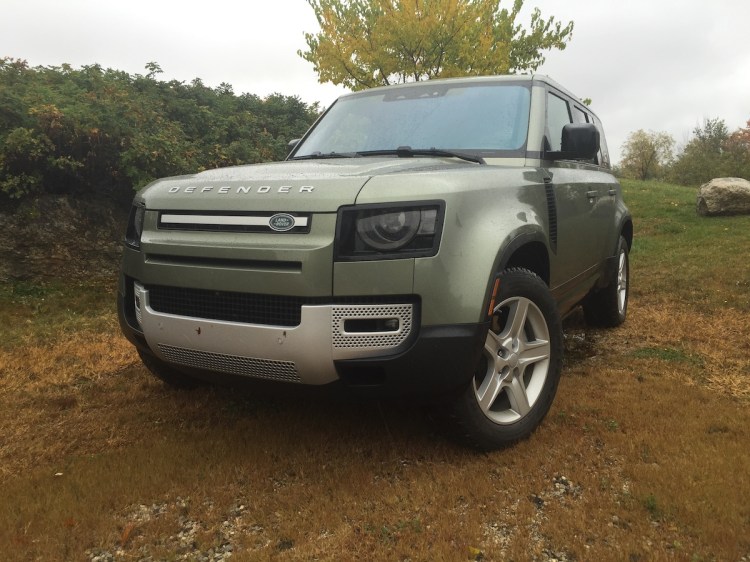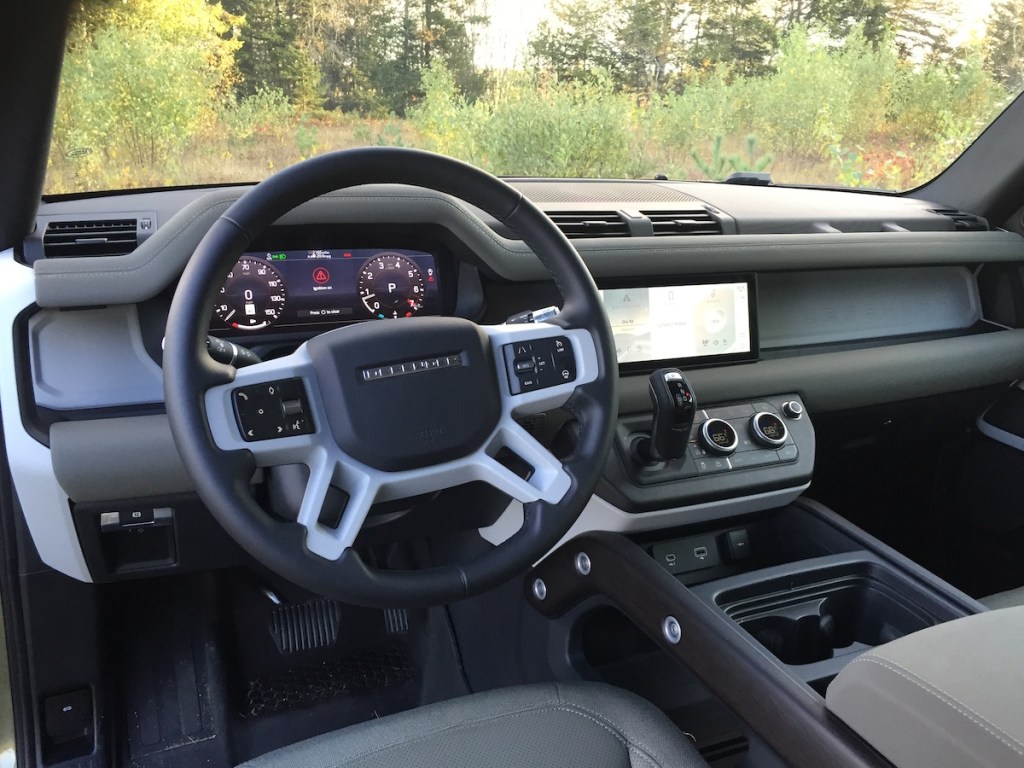Missing from America for over two decades, the tough, utilitarian Defender series returns to the States with features and capabilities here-to-fore never imagined by previous admirers of this legendary off-roader.
Since 2009, immense changes have occurred in the world-wide auto industry. Pontiac, Oldsmobile, Saturn, Plymouth, Mercury—all long-time brands, are gone. Volvo, the conservative Swedish brand, was consumed by Chinese automaker Gheely, while arch-rival Saab also disappeared. Jaguar and Land Rover, previously owned by Ford, were purchased by Tata Motors, an India-based empire. And oh yes, an upstart electric-car brand named after a famous scientist started sucking the oxygen out of the industry.
But along the way, many labels that used to be popular, and had taken a long nap, are coming back to life. Jeep’s Gladiator pickup, Ford’s Bronco SUV, and this week’s Defender all were popular names a few decades ago, models that consumers are rapidly embracing in a new age of social distancing and in pursuit of far-flung regions and experiences that can be shared on social media.
Given the focus on superior off-roading prowess each of these trucks propose, despite market data that indicates most owners never venture onto anything more for-boding than a dirt road, these boxy brutes sell life-style, adventure, and the promise of a life well-lived beyond the suburban jungle. And, buyers are willing to pay, dearly, for the privilege.
The Defender stakes claim to the luxury end of this adventurous class with two versions; the 2-door 90 model is closest to the traditional solid-axle, body-on-frame, Buick V-8-powered sport-utility that helped Land Rover build its reputation.
The Defender 110 is the four door version, including an optional third row seat that will probably be the volume seller. While the 90-model is closer to the 2-door Wrangler in size (180-inches long, 102-inch wheelbase), the 110-Defender (198-inches long, 119-inch wheelbase) is actually very close dimensionally to three of its own siblings—the Discovery, Range Rover, and the Range Rover Sport.
With pricing starting at either side of $50,000, the Defender seems poised to make the Discovery ($52,300) somewhat vulnerable to market losses.
Despite sharing names, the newest Defender is barely like its predecessor. A fully independent suspension with coil springs anchors each corner of the Uni-body design, with air assist on our SE trimmed 110, while full-time AWD with a twin-speed transfer box and selectable drive modes channels power from the 8-speed automatic. Two engines are offered; a 2.0-liter 296-hp turbocharged P300 four-cylinder, of course, is base power for both renditions, while a 395-hp turbocharged and supercharged (like Volvo) P400 3.0-liter in-line six cylinder engine is optional. Oddly, EPA mileage estimates are almost identical—17/22/19-mpg.
Trim levels range from S, X, First Edition, SE, HSE, and X-Dynamic—giving buyers a wide range of content options to customize their off-roader. Land Rover claims that the Defender has more ground clearance and a greater fording height than the Wrangler.
In real life, the Defender 110 is smoother and quieter down the road than almost any off-roader of any pedigree. The cabin retains exposed assembly screws—for a specific look—while the versatile, multi-level center console embodies all of the virtues of your favorite backpack. Cubbies and shelves across the dash, in the doors, and elsewhere add to the functional, yet nicely detailed, cabin.
The center touchscreen is more user friendly than any previous Rova component, the dash-mounted electric gear shifter helps make the console so practical, while the surround sound audio compliments the sound-deadening efforts. A 480 mile day in the saddle did nothing to discourage further use.
Picks and pans include weak throttle tip-in when starting, balanced by robust mid-range punch. LR uses wires in the windshield for defroster action (again, like Volvo) which creates some visual distraction, yet the rear view mirror converts to a clever camera. The rear door is right side hinged, there is a full-size spare (a welcome feature on a truck with the premise of taking you places you shouldn’t go), while the 10-inch screen (Apple/Android compatible, plus Wi-Fi hotspot) also accepts software updates over the air—like Tesla. Didn’t see that coming in the Defender did you.
Ride compliance is very good. Handling is better than a typical Rova. The brakes are quite touchy however and require some patience so you don’t make your passengers bob all over, yet the cargo compartment has four small skylights—like your mother’s old Vista Cruiser station wagon.
This new Defender pays homage to the original, but it’s a quantum leap forward. You might say the Brit’s have a lovely little hit on their hands.
Send questions/comments to the editors.





Comments are no longer available on this story